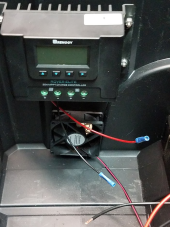I don't recall your battery size or type. For a lead acid battery an ANL or post fuse is fine, for lifepo4 a class-t is appropriate. It should be sized at 125% of your maximum current load to the battery. I didn't see an inverter size.
A quick look says you have AGM batteries but going to a 230A lifepo. I have a 120A bms on my lifepo, so I have a 150A class-t fuse right after the main positive battery post. And a main cutoff switch to completely disconnect the battery from the system. Pic below.
Wherever your solar controller attaches to your system, be it a bus or directly to the battery, that wire should also be fused - 125% of the rated charge current of the controller. A switching breaker or ANL fuse works well for this.
If you have an inverter, it too should have a fuse, but if it's attached directly to your battery it can use your battery main fuse.
You want to protect wiring based on maximum current carrying, plus 25% so it doesn't nuisance trip. Wiring to a 1000W inverter is going to be a lot larger than to a 30A solar charger since it can draw up to 120 amps. Each device or wire connection should be fused to protect that wiring.
Lifepo4 can put out so much current it can arch across a fuse and weld it's own bridge, and why a classT is spec'd for them.
My DIY 230A lifepo4 battery pack from prismatic cells. My solar chargers are breakered or fused where they attach to the system bus. My primary wires are 2awg to carry up to 120 amps. My inverter is a 600W, and total system current draw adds up to about 80-90A if I turned everything on.





